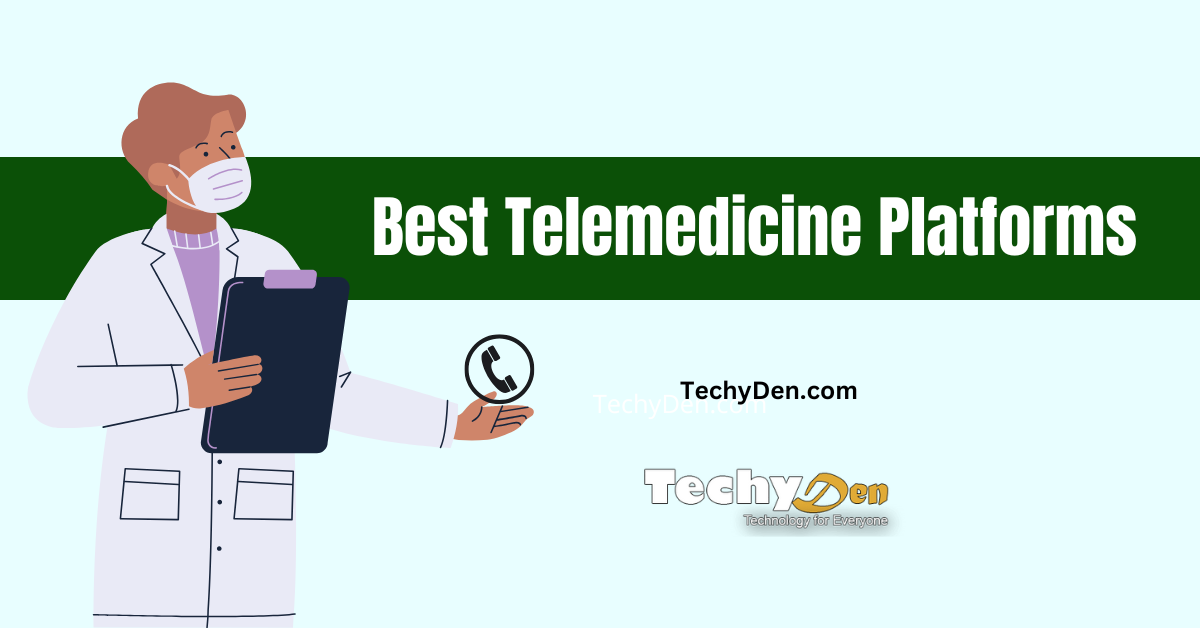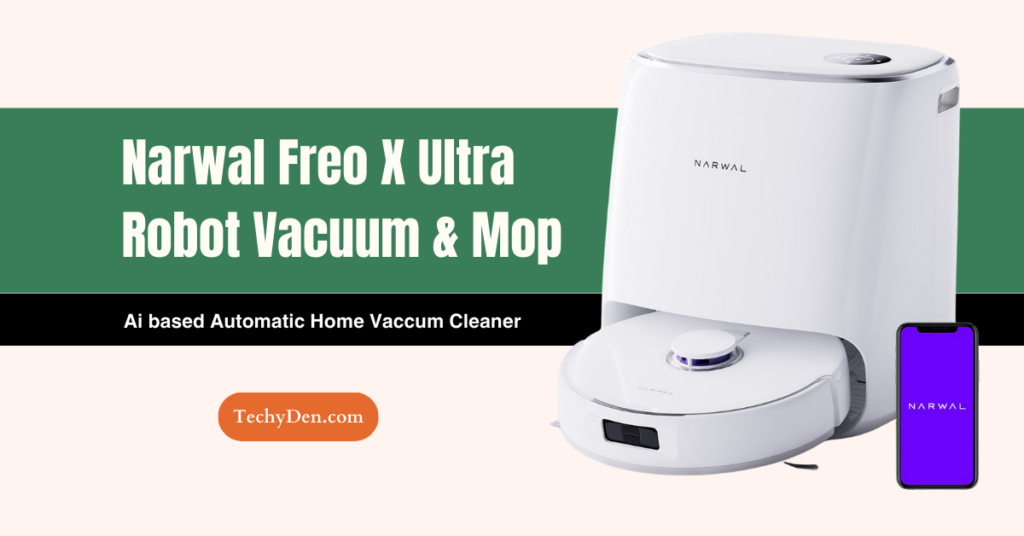Telemedicine platforms have revolutionized healthcare delivery. These telemedicine platforms enable remote medical consultations. They also provide mental health support and ongoing patient care through digital technologies. Healthcare needs are evolving, and patients seek more convenient ways to connect with providers through telemedicine platforms.
The integration of AI in healthcare amplifies this demand for telemedicine platforms. As a result, these telemedicine platforms have become essential tools for modern medical practice. Major hospital systems use comprehensive telemedicine platforms, while independent practitioners utilize specialized platforms. Today’s telemedicine platforms offer varying approaches to virtual care delivery.
In this article, we’ll explore the 10 best telemedicine platforms for remote healthcare in February 2025. We will highlight their core capabilities and unique features. We will also describe specific use cases to help healthcare providers and organizations identify the best solutions for their needs.
When evaluating telemedicine platforms, consider factors such as user experience, features, and compliance with regulations.
Leading telemedicine platforms are built with security and privacy in mind to protect patient information.
Best Telemedicine Platforms
In this article, we’ll explore the 10 best telemedicine platforms for remote healthcare in February 2025. We will highlight their core capabilities and unique features. We will also describe specific use cases to help healthcare providers and organizations identify the best solutions for their needs.
1. QuickBlox
QuickBlox offers HIPAA-compliant telemedicine solutions that enable healthcare providers to build secure virtual care platforms. QuickBlox provides a comprehensive suite of SDKs, APIs, and white-label solutions. These tools help medical organizations create engaging communication systems for remote patient management. They maintain strict data privacy standards.
Key Features:
- HIPAA-compliant messaging system: Ensures all data is encrypted both in transit and at rest. This provides a secure environment for sensitive medical information.
- Real-time chat functionality: Includes message delivery status and typing indicators, enhancing communication between healthcare providers and patients.
- Video conferencing: Supports one-on-one and group video calls with up to four participants, ideal for virtual consultations and team meetings.
- Secure file sharing: Allows healthcare providers to share medical documents, test results, and multimedia content securely.
- AI-powered SmartChat assistants: These can be trained on organization-specific data to provide personalized support and automate routine tasks.
- Custom SDK options: Available for iOS, Android, JavaScript, React Native, and Flutter. These options make it easy to integrate QuickBlox into existing systems.
- White-label solutions: Enable rapid deployment of branded healthcare apps, allowing organizations to maintain their brand identity.
Healthcare organizations often evaluate multiple telemedicine platforms to find the best fit for their needs.
QuickBlox is praised for its cost-effectiveness among telemedicine platforms. It is also appreciated for its developer-friendly nature. This makes it a top choice for healthcare providers looking to scale their telemedicine services. The platform’s flexibility allows it to grow alongside healthcare practices, ensuring personalized care experiences even as telemedicine services expand.
Many telemedicine platforms provide customizable solutions tailored to specific practice requirements.
2. Carepatron
Carepatron is an all-in-one practice management and Electronic Health Record (EHR) platform designed for healthcare and wellness professionals. It combines telemedicine capabilities with practice management tools, helping practitioners streamline operations while delivering high-quality virtual care.
Key Features:
- Automated appointment scheduling: Simplifies the booking process and sends reminders to patients, reducing no-shows.
- Customizable forms and templates: Allows healthcare providers to tailor documentation to their specific practice needs.
- AI-powered automation tools: Reduces administrative workload by automating repetitive tasks, freeing up time for patient care.
- Integrated video conferencing: Enables virtual consultations directly within the platform, ensuring seamless patient-provider interactions.
- Mobile app access: Provides healthcare providers with on-the-go access to patient records, schedules, and communication tools.
Carepatron is particularly valued by solo practitioners and small practices for its cost-effectiveness and time-saving features. The platform’s unified interface helps practitioners manage their practice more efficiently, from scheduling appointments to handling client communications.
Choosing the right telemedicine platform can lead to improved patient satisfaction and outcomes.
Telemedicine platforms can enhance communication between patients and healthcare providers, ensuring timely care.
3. Teladoc Health
Teladoc Health provides virtual healthcare services through an integrated platform that connects patients with medical professionals. The platform combines telemedicine, mental health support, and chronic condition management in one comprehensive system.
Key Features:
- Round-the-clock virtual medical consultations: Patients can access healthcare providers 24/7 for diagnosis and treatment of common conditions.
- Mental health services: Offers access to 30,000 licensed therapists for counseling and medication management.
- Chronic condition management: Specialized programs for managing conditions like diabetes and hypertension, with proven outcomes in reducing medical costs.
- Specialized care options: Includes dermatology consultations, sleep management, and virtual nursing support.
Teladoc Health has conducted over 50 million virtual visits, with significant outcomes in diabetes management and mental health care. Their diabetes management program shows medical cost reductions averaging $1,572 per patient annually. 76% of patients report improved depression symptoms after three therapy sessions.
4. SmartClinix
SmartClinix, developed by American TelePhysicians, is an integrated virtual care platform that combines telemedicine capabilities with electronic medical records. It focuses on bringing together traditionally separate healthcare tools into a unified platform.
Key Features:
- Unified EMR and telemedicine integration: Allows healthcare providers to manage patient records and conduct video consultations from a single interface.
- Remote patient monitoring: Tracks patient health data from connected devices, enabling proactive care and early intervention.
- Customizable practice management tools: These tools adapt to the unique requirements of different medical specialties. Examples include direct primary care or concierge services.
- HIPAA-compliant video consultation: Ensures secure and private virtual consultations.
SmartClinix is ideal for practices looking to optimize resources and improve patient outcomes through proactive care. The platform’s international compatibility allows physicians to expand their practice beyond geographical boundaries. However, physicians must pay careful attention to varying healthcare regulations across different regions.
Understanding the differences between telemedicine platforms can help providers make informed decisions.
5. Amwell
Amwell’s Converge platform advances healthcare delivery by combining in-person, virtual, and automated care. It serves as a connection point between healthcare providers, insurance companies, and technology innovators.
Key Features:
- Integration with existing electronic health records: Ensures smooth transitions between virtual and in-person care.
- Automated care programs: Engages patients through intelligent, clinically-based conversations guided by a decision engine.
- Specialty care consultation network: Facilitates provider-to-provider collaboration, enabling physicians to consult with specialists easily.
- Social determinants of health assessment tools: Helps providers understand and address factors that impact patient health beyond clinical care.
Amwell has connected over 2,000 healthcare organizations, making it a foundational tool for modern healthcare delivery. The platform’s success depends on proper integration with existing workflows. When implemented correctly, it significantly enhances care coordination. It also improves patient outcomes.
6. Doctor on Demand
Doctor on Demand is a comprehensive telehealth platform providing virtual medical and mental health services through mobile devices and computers. It connects patients with board-certified healthcare providers for a wide spectrum of health concerns.
Key Features:
- Round-the-clock access to urgent care providers: Patients can connect with a provider within minutes for urgent medical needs.
- Comprehensive mental health services: Includes therapy and psychiatry for conditions like anxiety, depression, and PTSD.
- Chronic condition management: Helps patients manage conditions such as asthma, diabetes, and high blood pressure.
- Transparent pricing structure: Patients know the cost of services upfront, with no hidden fees.
Doctor on Demand is known for its quick provider matching system. It offers 24/7 availability. This makes it a reliable option for both urgent and ongoing healthcare needs.
7. Mend
Mend is a telehealth and patient engagement platform designed for mental and behavioral healthcare providers. It emphasizes security and compliance while streamlining administrative tasks through automation and AI.
Key Features:
- HIPAA-compliant video platform: No software downloads are required, ensuring easy access for patients.
- AI-powered attendance prediction system: Identifies potential no-shows and cancellations, allowing providers to address attendance issues proactively.
- Automated appointment reminders: Reduces no-show rates through multi-channel reminders.
- Integration with major behavioral health EHR systems: Ensures seamless data sharing and workflow integration.
Mend’s AI algorithm helps reduce no-show rates, making it a valuable tool for mental health practices. The platform’s 99.85% successful connection rate and comprehensive security compliance further enhance its reliability.
8. Sesame
Sesame operates as a direct-pay marketplace connecting patients with medical providers without the involvement of insurance companies. It offers transparent pricing and a wide range of healthcare services.
Key Features:
- Direct-pay marketplace: Patients can browse services, availability, and prices directly from providers.
- Online prescription management: Patients can request and refill prescriptions through the platform.
- Laboratory and diagnostic testing coordination: Facilitates access to lab services and diagnostic appointments like X-rays and MRIs.
- No insurance requirements: Eliminates administrative costs linked to insurance processing.
Sesame is particularly beneficial for patients with high insurance deductibles. It also helps those lacking coverage. It offers a transparent and affordable alternative to traditional healthcare services.
9. Doxy.me
Doxy.me offers browser-based telemedicine that connects healthcare providers with patients without requiring software downloads. It’s accessible on both computers and mobile devices.
Key Features:
- Browser-based system: No software downloads or installations are required, making it easy for patients to access care.
- Virtual waiting room and patient queue management: Helps providers manage multiple appointments efficiently.
- End-to-end encryption: Ensures all communications are secure and HIPAA-compliant.
- Custom branding options: Allows organizations to maintain their brand identity within the platform.
Doxy.me is praised for its simplicity. It also complies with healthcare privacy regulations. This makes it a popular choice for healthcare providers looking for an easy-to-use telemedicine solution.
10. TheraPlatform
TheraPlatform is a web-based practice management system designed for therapy professionals, including mental health practitioners, speech therapists, and occupational therapists. It combines EHR, practice management tools, and teletherapy capabilities.
Key Features:
- HIPAA-compliant video conferencing: Includes therapy-specific tools like screen sharing and interactive therapy applications.
- Electronic health records: Customizable note templates allow therapists to document sessions efficiently.
- Automated scheduling and reminders: Reduces no-shows and streamlines practice management.
- Interactive therapy applications: A library of therapeutic games is available. These games help engage younger clients. They also benefit clients who prefer interactive elements.
TheraPlatform is ideal for therapy practices looking to streamline operations and enhance patient engagement. The platform’s focus on security and therapeutic engagement makes it a valuable tool for mental health and behavioral health professionals.
The Bottom Line
The future of healthcare is increasingly digital, and telemedicine platforms are at the forefront of this transformation. Whether you’re part of a large healthcare network or a small practice, choose the correct telemedicine platform. This decision can greatly improve patient care. It also boosts operational efficiency.
The telemedicine platforms listed above offer a range of features. They are tailored to different needs. These features include HIPAA-compliant communication, AI-powered automation, and remote patient monitoring. These telemedicine platforms provide valuable resources for healthcare providers.
As virtual care becomes more integral to healthcare delivery, understanding these telemedicine platforms’ capabilities and limitations is essential. This knowledge will help providers select solutions that align with their practice goals. It also ensures quality patient care through telemedicine platforms.







